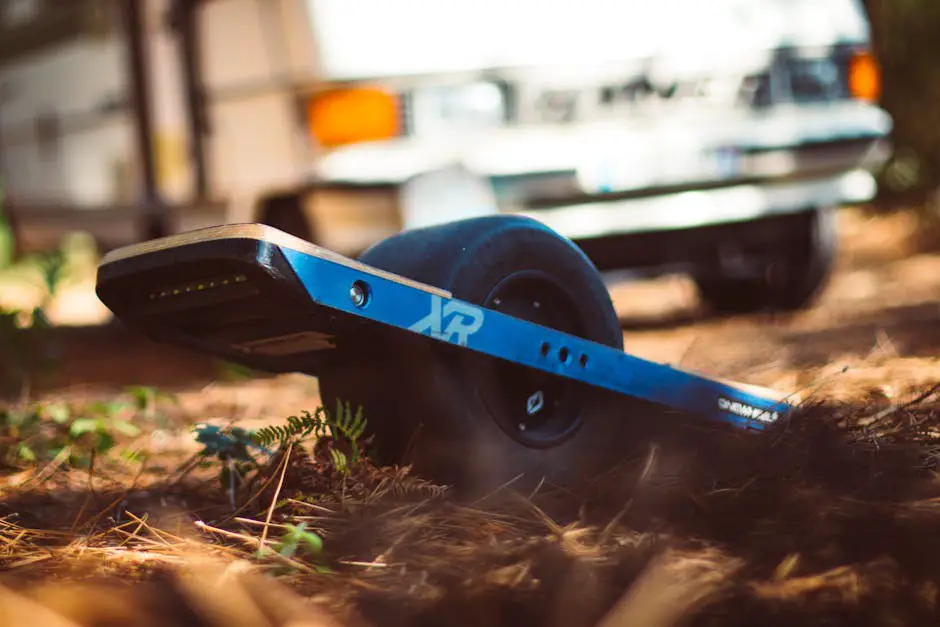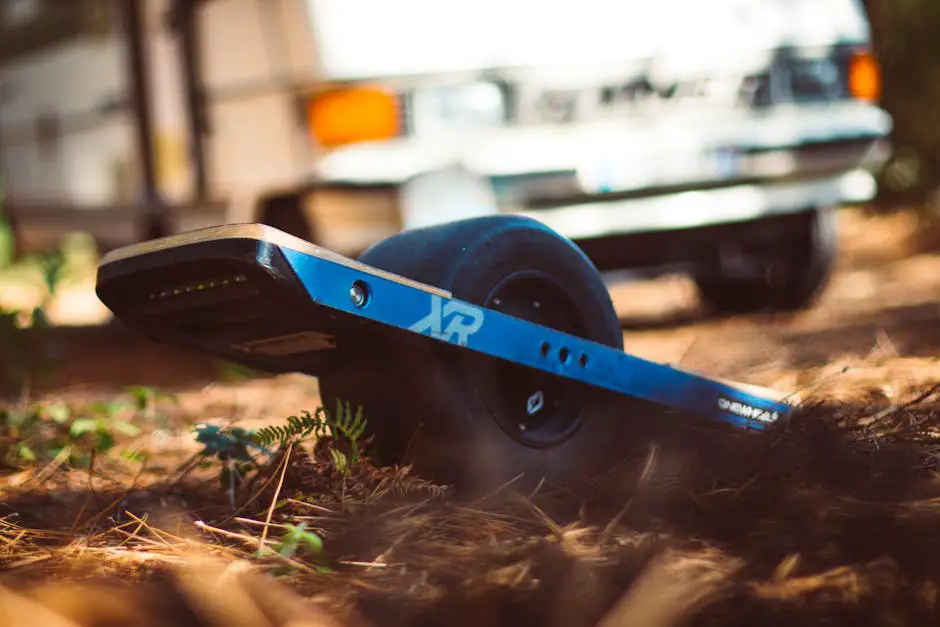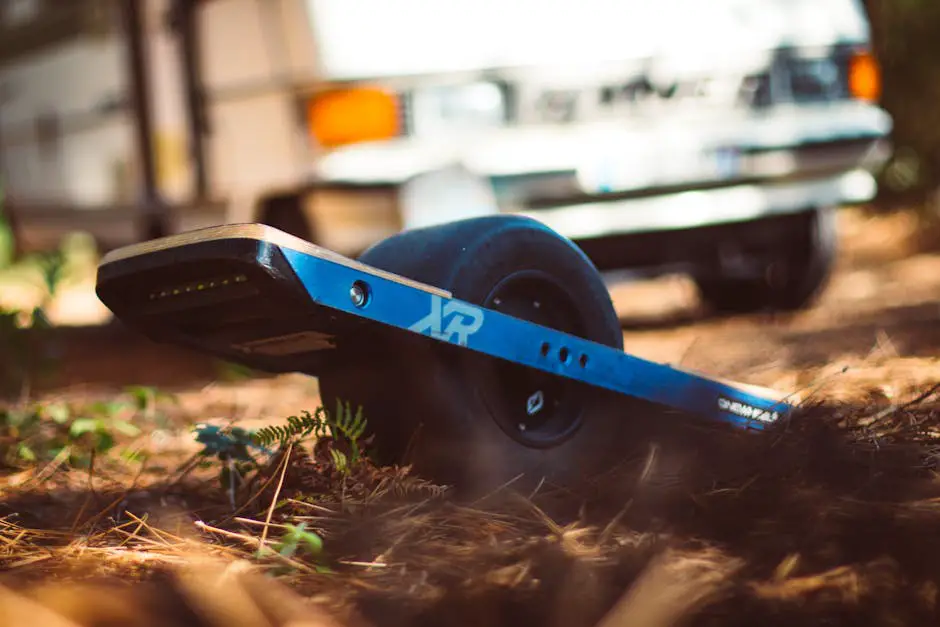Electric skateboards are changing the way we move through our cities, combining the excitement of skateboarding with the convenience of electronic power. But it’s not always a smooth ride. The streets can be full of surprises like potholes and cracks, making shock absorption a key feature of these modern boards. In this exploration, we uncover the technology behind shock absorption and how it contributes to a safer, more enjoyable experience on electric skateboards.
The Science of Shock Absorption in Skateboarding
Electric skateboards have revolutionized the way we navigate urban landscapes, merging the adrenaline rush of skateboarding with electric efficiency. However, cruising through bustling city streets is far from smooth sailing. From potholes to pavement cracks and everything in between, the unpredictable nature of city terrains poses a challenge. This is where shock absorption leaps into the spotlight, playing a crucial role in electric skateboard functionality. Let’s delve into the mechanics and importance of shock absorption in ensuring a stable and enjoyable ride on these innovative vehicles.
At the heart of electric skateboard design lies the quest for balance between speed and safety. Shock absorbers are the unsung heroes in this equation, mitigating the impact of rough surfaces on the rider. To understand their significance, imagine riding over a bumpy road. Without shock absorption, every jolt and bump is directly transferred to the rider, making for an uncomfortable, and potentially uncontrollable, ride. Shock absorption systems work by soaking up these vibrations and impact forces, providing a smoother experience.
The benefits of effective shock absorption are multi-fold. Firstly, it enhances rider comfort, allowing for longer rides without the fatigue associated with constant vibration. Imagine cruising through city streets with ease, barely noticing the cracks and bumps beneath you. Secondly, shock absorption contributes significantly to skateboard stability. By dampening the impact of surface irregularities, these systems help maintain continuous contact between the wheels and the ground, ensuring better control and safety at higher speeds.
Moreover, shock absorption protects the integrity of the skateboard itself. Continuous impact without proper damping can lead to wear and tear of the board’s components, ultimately shortening its lifespan. By absorbing the brunt of road imperfections, shock absorbers extend the durability of the skateboard, making it a reliable companion for your urban adventures.
The mechanics of shock absorption in electric skateboards are fascinating, typically involving springs or rubber dampers integrated into the trucks or the deck itself. These components compress under impact, absorbing energy, and then release it slowly, preventing it from reaching the rider. The design and efficacy of these systems vary among models, with some offering adjustable settings to cater to different rider preferences and conditions.
To sum up, shock absorption is not just an added feature; it’s a fundamental component that directly impacts the functionality and appeal of electric skateboards. It bridges the gap between the rough unpredictability of urban terrains and the smooth, exhilarating ride that electric skateboards promise. Whether you’re weaving through the city or exploring less-than-perfect paths, the quality of your ride heavily relies on the effectiveness of your skateboard’s shock absorption system. Embracing this technology leads to a more enjoyable, safer skateboarding experience, showcasing how innovation continues to propel this thrilling mode of transportation forward.

Comparative Analysis of Deck Materials
Stepping into the highly detailed realm of deck materials and their capabilities in shock absorption, we delve into an exploration of how these components crucially contribute to the overall performance and comfort of electric skateboards. Each material boasts its unique set of properties that directly influence the ride experience, especially when navigating the often unpredictable urban landscapes. From traditional wood composites to innovative synthetics, the choice of deck material can significantly affect the skateboard’s ability to absorb shocks, thus ensuring a smoother ride across a variety of terrains.
First on our list is the classic maple wood deck, a staple in the skateboard industry for its remarkable blend of flexibility and durability. Maple decks are known for their natural capacity to dampen vibrations, providing a smooth ride even on rough surfaces. However, when it comes to shock absorption, they offer a moderate performance level, balancing between rigidity for speed and pliability for comfort. This makes them a go-to choice for riders looking for an all-around performance deck that caters to both leisure cruising and high-speed urban commuting.
Advancing to the realm of composites, bamboo decks introduce an exceptional level of shock absorption due to their inherent flexibility. Unlike the more rigid maple, bamboo decks can bend considerably under stress, channeling and dispersing the energy from impacts more effectively. This results in a noticeably smoother ride that significantly reduces the strain on the rider’s legs and feet, making bamboo decks an excellent option for prolonged commutes over varied terrains.
In the sphere of synthetic materials, fiberglass and carbon fiber composites mark a revolutionary step in skateboard deck design. These materials are engineered for high-tensile strength and elasticity, allowing them to absorb and rebound from shocks with unparalleled efficiency. Decks made from these composites offer an ultra-smooth riding experience, with the added benefits of being lightweight and exceptionally resistant to environmental wear and tear. The enhanced shock absorption capabilities of fiberglass and carbon fiber decks make them ideal for riders seeking the ultimate comfort and performance in their electric skateboarding journeys.
Additionally, there are newer, innovative materials on the horizon, such as thermoplastics and advanced polymers, designed to further enhance shock absorption. These materials are still being explored for their full potential in skateboard deck applications but promise to bring even greater improvements in ride smoothness and durability.
In synthesizing the information, it becomes clear that the choice of deck material plays a pivotal role in an electric skateboard’s ability to absorb shocks. Each material offers a distinct combination of flexibility, durability, and shock absorption, directly influencing the skateboard’s performance in urban environments. Whether it is the classic feel of maple, the extraordinary pliability of bamboo, or the cutting-edge resilience of composites, riders have a range of options to tailor their skateboarding experience to their personal preferences and the challenges of city terrains. Understanding these material properties allows for a more informed decision when selecting an electric skateboard, ensuring a balance between speed, safety, and above all, a comfortable ride.

Impact on Rider Comfort and Fatigue
Shifting gears from the anatomy of electric skateboards and their construction elements, let’s dive deeper into the practical effects of shock absorbency on a rider’s experience. Imagine cruising down a bustling city street, your electric skateboard deftly navigating between the concrete jungle’s obstacles. The smoothness of your ride heavily rests on how well your board absorbs shocks. But why is this feature so pivotal for long rides, and how does it transmute into enhanced rider comfort and endurance?
First and foremost, consider the relentless vibrations transmitted from the ground to the skateboard and, subsequently, the rider. Over time, these vibrations can lead to fatigue, making long ventures less enjoyable and more tiresome. Here’s where top-notch shock absorption kicks in, dampening those persistent vibrations, reducing the strain on your ankles, knees, and lower back. This cushioning effect allows for longer rides with diminished fatigue, crucial for commuters or enthusiasts embarking on extended escapades.
Moreover, shock absorbency is intimately tied to maintaining control and stability. The bumps and unpredictable terrain of urban landscapes demand a board that can adapt instantaneously. A skateboard equipped with effective shock absorption maintains better contact with the ground, ensuring that you, the rider, retain control. This heightened stability is not just about comfort; it’s about safety too. A more stable board reduces the risk of accidents, which is especially important when navigating crowded city streets.
Endurance is another beneficiary of optimized shock absorbency. The less jarring the ride, the less energy your body expends combating vibrations and maintaining balance. This conservation of energy directly translates to increased endurance, enabling longer rides with less physical toll. Whether you’re using your electric skateboard for commuting, recreation, or exploring new terrains, the ability to ride longer without fatigue significantly enhances the experience.
The psychological impact of a comfortable ride cannot be understated. A board that smoothly glides over cracks and crevices creates a sense of confidence in the rider. This confidence encourages more frequent use and longer trips, enriching the overall ride quality.
Lastly, the longevity of the skateboard itself is at stake. Effective shock absorption protects not just the rider but also the board’s components. Less vibration means reduced wear and tear on the skateboard’s deck, trucks, and bearings. This protection against the rigors of rough terrain ensures a longer lifespan for the board, saving costs on repairs and replacements in the long run.
In essence, shock absorbency is a linchpin in the nexus of rider comfort, control, endurance, safety, and the longevity of the skateboard. Through mitigating the relentless vibrations and bumps encountered on long rides, an electric skateboard with superior shock absorption transforms the riding experience from merely getting from point A to B, to an enjoyable venture through the urban landscape. As riders continue to push the boundaries of where their electric skateboards can take them, the pursuit of excellence in shock absorption remains paramount, promising a smoother ride into the future of urban exploration.

Innovations in Shock-Absorbent Skateboard Technology
In the evolving world of electric skateboards, the quest for the perfect ride has led innovators down the path of developing advanced shock-absorbent materials. With the goal of enhancing rider comfort, maintaining stability, and protecting the delicate electronics that power these modern marvels, recent advancements have showcased an exciting future for skateboard enthusiasts. Let’s dive into some of the latest innovations that are setting new standards in the industry.
One of the most significant breakthroughs comes in the form of memory foam polymers. These materials, inspired by the best-selling comfort mattresses, have been adapted to fit within the layers of electric skateboard decks. What makes memory foam polymers stand out is their ability to distribute impact evenly across the board. This results in a smoother ride, especially when traversing over rough surfaces like cobblestones or uneven pavement. The adaptation of memory foam into skateboards signifies a leap towards personalized comfort, adapting to the weight and riding style of the user for an unparalleled experience.
In the realm of shock absorption, silicone gel inserts have emerged as a front-runner. Known for their use in high-impact sports gear, silicone gel inserts are being incorporated into the deck and truck areas of electric skateboards. These inserts work by absorbing vibrations before they can reach the rider, effectively reducing fatigue on longer journeys. The properties of silicone gel allow it to perform under a wide range of temperatures, ensuring that whether you’re skating on a hot summer day or a chilly evening, performance remains consistent.
The integration of nano-ceramics into the composition of electric skateboard wheels is another area of innovation. Nano-ceramics, a technology derived from aerospace engineering, offer the dual benefits of durability and shock absorption. Wheels made with nano-ceramic composites are not only tough enough to withstand the rigors of urban skating but also excel in dampening vibrations. This creates a ride that feels both grounded and glide-like, a balance that was previously hard to achieve.
Lastly, advances in 3D printing technology have revolutionized the way shock-absorbent components are manufactured. Customizable and intricate geometric patterns, unachievable through traditional manufacturing processes, are now possible. These complex structures can provide targeted shock absorption in critical areas of the skateboard, such as near the trucks where the impact from jumps or bumps is most concentrated. The ability to customize the density and distribution of these patterns means that skateboards can be tailored to the specific needs of the rider, factoring in weight, riding style, and preferred terrain.
As we move forward, the focus on developing superior shock-absorbent materials reflects a broader trend in electric skateboarding: the pursuit of excellence in rider experience. With each advancement, we see a future that promises not only faster and more efficient urban mobility but also a ride that is enjoyable, comfortable, and tailored to the individual. As these technologies continue to evolve, the line between transportation and adventure blurs, offering a glimpse into a future where every journey is as thrilling as the destination.

Choosing the Right Shock-Absorbent Deck
When it comes to selecting a shock-absorbent electric skateboard, several crucial aspects must be considered beyond the skateboard deck materials and the significance of shock-absorption mechanisms discussed earlier. Choosing the right electric skateboard involves understanding the symbiosis between technology, materials, and design to ensure a ride that meets the needs of urban commuting and personal riding styles. Here, we delve into additional factors consumers should weigh in their decision-making process.
Wheel Type and Material: Just as the deck’s material plays a pivotal role in shock absorption, the wheels are equally critical. Most electric skateboards come equipped with polyurethane wheels, known for their resilience and ability to provide a smooth ride on a variety of surfaces. However, the hardness of the wheels, measured on the durometer scale, can greatly influence shock absorption. Softer wheels are typically better at absorbing shocks and vibrations, offering a smoother ride on bumpy terrains. In contrast, harder wheels might offer more speed and less drag on smooth surfaces but can lead to a rougher ride on uneven ground.
Battery Placement and Weight Distribution: Surprisingly, the electric skateboard’s battery placement can impact its shock absorbency. A well-designed electric skateboard should have its weight (primarily from the battery) evenly distributed to maintain balance and stability, reducing the jarring effect of bumps and uneven surfaces. Skateboards with misbalanced weight distribution can lead to harder impacts on one end, increasing the vibration felt by the rider.
Truck Design and Adjustability: The trucks of an electric skateboard, which connect the wheels to the deck, are integral in determining how well the skateboard can absorb shocks. Wider trucks can offer better stability, which indirectly contributes to shock absorption by keeping the skateboard steady on uneven surfaces. Additionally, the ability to adjust the tightness of the truck’s kingpin affects the board’s responsiveness and, consequently, its ability to handle bumps and vibrations. A tighter setting offers more stability at high speeds, while a looser setting allows for better shock absorption at slower speeds.
Rider Weight and Electric Skateboard Capacity: It’s essential to consider the rider’s weight in relation to the electric skateboard’s weight capacity. Skateboards designed to support heavier weights typically have robust shock-absorption systems to ensure a smooth ride regardless of the rider’s weight. Meanwhile, boards with a lower weight capacity might not provide the same level of shock absorption for heavier riders, leading to a less comfortable experience.
Personal Riding Style and Terrain: Finally, the individual’s riding style and the typical terrain they will traverse play a crucial role in selecting the ideal shock-absorbent electric skateboard. Riders who prefer high speeds and aggressive riding might prioritize boards with advanced shock-absorption systems that can handle high-impact activities. Conversely, those who use their electric skateboard for leisurely rides on mostly flat terrains might find a basic shock-absorption system sufficient for their needs.
In selecting an electric skateboard, consumers should remember that a sophisticated shock-absorption system enhances the riding experience by improving comfort, stability, and the lifespan of the skateboard. By considering these additional elements—wheel type, battery placement and weight distribution, truck design, rider weight, and personal riding preferences—individuals can find an electric skateboard that not only navigates urban landscapes with ease but also provides a ride tailored to their specific desires and requirements.

As we’ve seen, shock absorption stands at the core of what makes electric skateboarding not only possible but pleasant in the often unpredictable terrain of urban environments. The evolution of materials and technologies continues to push the boundaries of what these boards can offer, ensuring that every ride is as smooth and enjoyable as the last. By choosing the right shock-absorbent features, riders can transform their urban commutes into smooth glides through the streets, proving that even the smallest details can have a big impact on our daily rides.

